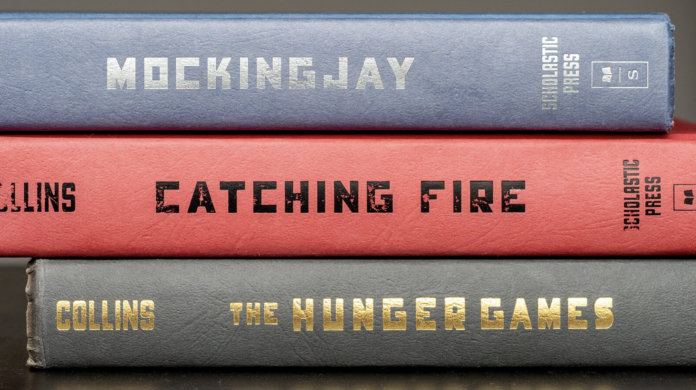Looking back on “The Hunger Games” series in preparation for its upcoming prequel
BY JULIE HUANG – arts@theaggie.org
The long-awaited second prequel to Suzanne Collins’ “The Hunger Games,” titled “Sunrise on the Reaping,” was released on March 18, promising to tell the story of Katniss’ mentor Haymitch Abernathy as a tribute in the 50th annual Hunger Games. Due to the novel’s prequel status, the ending seems to be a foregone conclusion, but revisiting the earlier books in the series may remind readers of crucial plot points and sharpen the sense of fate that the characters in “Sunrise on the Reaping” are faced with.
“The Hunger Games”
The book that began the franchise, “The Hunger Games” features the most self-contained plot in the series. Tightly paced and packed with action, it could technically stand alone as a gripping thriller about a group of teenagers who fight each other to the death in a survival arena. However, this first foray into the games is also tasked with the challenge of introducing readers to the dystopian country of Panem through the mind of the wary and isolated teenager Katniss Everdeen, and it succeeds.
As narrator and protagonist, Katniss is terribly observant of the issues that affect her directly, including the lives of her loved ones. This shrewd nature extends to some cutting commentary on the injustice of her society. Yet there’s also much that she’s unaware of, as the oppressive ruling class guard their secrets and play political games. Balancing these political machinations with life-or-death action, “The Hunger Games” carefully sets up the characters and forces that will come into play in the second and third novels of the trilogy.
“Catching Fire”
Having survived the arena together, Katniss and Peeta Mellark leave the physical threats of the games behind and become unwilling political pawns for the Panem government. Katniss especially finds herself under the yoke of President Coriolanus Snow, as he has threatened to kill her loved ones unless she yields to his will by presenting herself as passive and nonthreatening to the cruel regime. This performance requires her to engage in a pretend romance with her fellow tribute Peeta.
Collins once again transforms political intrigue into another type of story, this time substituting action for romance until Katniss and Peeta are forced to return to the arena and the stakes are driven upwards once more. As the second book, “Catching Fire” does an excellent job of transitioning from the thrill of the first novel to the broader world of the series as a whole, intertwining romance, action and political plotlines in a way that feels all too natural.
“Mockingjay”
As the finale to the original trilogy, “Mockingjay” breaks away from the Hunger Games arena and focuses more explicitly on Katniss’ role as a figurehead for the growing rebellion against the oppressive government ruled by Snow. As such, the political stakes of the previous novels’ personal entanglements are made more explicit, framed in the context of the political unrest and physical uprisings that concern not just a few people but all of Panem. The book can be summarized as a collection of bittersweet moments amidst a wave of tragedy. Knowing that “Mockingjay” is the last entry into the main trilogy, and that all of the characters’ fates are final, adds a touch of solemnity to the ending while sweetening the rays of hope that Collins leaves for her characters.
“The Ballad of Songbirds and Snakes”
Fellow prequel to “Sunrise on the Reaping,” “The Ballad of Songbirds and Snakes” provides the unexpected experience of witnessing the most vulnerable and sympathetic days of Snow’s life, transporting the machiavellian dictator back into his youth when he was an ambitious underdog on a university scholarship. The prequel reveals that Snow always had a capacity for cruelty, but his family’s poverty and his own lived experiences with hardship seem to justify his ruthlessness somewhat.
Collins may be commenting on the idea of villains with sympathetic backstories. As in the main trilogy, she throws a love story into the mix as Snow develops a relationship with the District 12 tribute he is mentoring, the enigmatic and lovely Lucy Gray Baird. However, as in the trilogy proper, this romance is far from conventional or happy. Rather than softening his character, these elements of romance instead complicate the question of whether Coriolanus was always destined to become President Snow.
As the release date has just recently passed, looking back on the events of the earlier books may heighten the anticipation for “Sunrise on the Reaping,” as readers wait to experience the interiority of the beloved but mysterious character of Haymitch Abernathy.
Written by: Julie Huang — arts@theaggie.org





